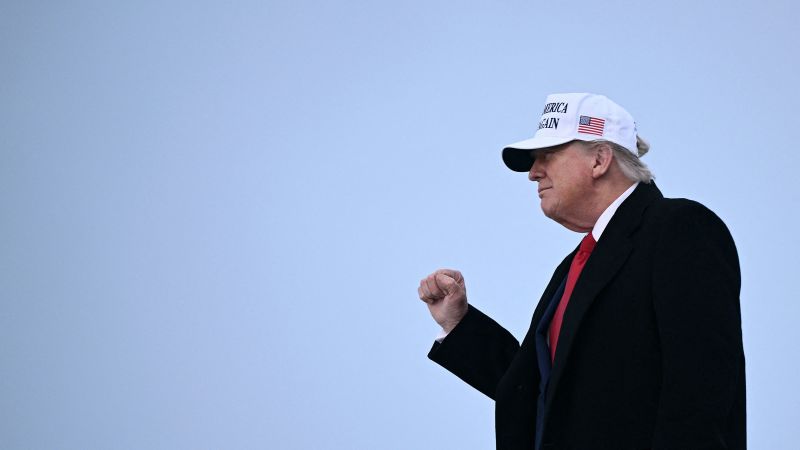President Donald Trump’s decision to open a two-week negotiating window regarding the escalating tensions with Iran follows a period of significant military action by Israel against Iranian targets. This decision indicates an urgent attempt to restart negotiations that had stalled, particularly as Israel intensified its bombing campaign in the preceding week. Aiming to resolve the deadlock, Trump and his advisers hope that the continuous Israeli military operations and Iran’s recent losses to its missile capabilities will lead Tehran to soften its previously unwavering stance, specifically concerning uranium enrichment.
The rationale behind Trump’s deferment of a decision appears rooted in balancing the potential repercussions of further military actions that might entangle the U.S. in a conflict. With pressure mounting for a decisive action, the president’s tone shifted from hawkish to contemplative, allowing him more time to assess the implications of a strike against Iranian interests—something he had promised to avoid. However, the likelihood of achieving a diplomatic resolution within the tightly compressed timeline is fraught with complications.
Initial discussions about deploying Middle East envoy Steve Witkoff and Vice President JD Vance to engage in diplomatic talks with Iran did not materialize, largely due to Trump’s reluctance to pursue diplomatic avenues that may not yield immediate results. Instead, both Vance and Witkoff remained in Washington, stymying potential negotiations. Concurrently, European foreign ministers from Britain, Germany, and France were en route to Geneva to discuss the situation with Iranian representatives. Despite having been briefed on the details of earlier U.S. proposals that Iran had rebuffed, the expectation of substantial progress from these discussions remains low.
Iran has steadfastly maintained its position in the face of Israeli strikes, adamantly refusing to engage with the U.S. until the military operations cease. The U.S., meanwhile, has not pressured Israel to halt its attacks, with Trump reportedly encouraging Israeli Prime Minister Benjamin Netanyahu to continue. The apparent disconnect between U.S. diplomatic rhetoric and Israeli military actions brings into question the effectiveness of any negotiations, with Iran perceiving continued enrichment as a non-negotiable issue.
Despite signaling a potential shift toward diplomacy, doubts loom large about the feasibility of a constructive dialogue. Trump’s recent comments suggesting a renewed focus on diplomacy risk being overshadowed by aggressive military options being readily available. Press Secretary Karoline Leavitt emphasized his inclination toward peaceful resolutions, while simultaneously warning of the unmatched military capabilities of the United States if the situation called for strength.
In a series of strategic meetings, Trump has sought advice on the feasibility of military options, specifically regarding potential strikes on Iran’s nuclear facilities like Fordow. His discussions reflect a deep concern about the ramifications of entering a prolonged conflict, echoing apprehensions expressed by some of his closest advisers. The complexity of predicting military outcomes adds to the pressure as Trump balances the urge for military action with the potential for long-term conflict.
As the negotiations unfold, the two-week timeline for talks has received mixed reactions, particularly from Israeli intelligence sources who believe it is unhelpful to delay decisiveness. Regardless, Trump’s approach continues to involve intensive intelligence briefings, maintaining close collaborations with key figures in the military and intelligence, including CIA Director John Ratcliffe and General Dan Caine.
Central to the diplomatic efforts, Witkoff remains a pivotal figure, having previously engaged in discussions with Iranian Foreign Minister Abbas Araghchi. The parameters of Iran’s uranium enrichment remain critical, with the U.S. administration insisting that any final deal must include a complete cessation of enrichment on Iranian soil. Meanwhile, European leaders prepare to gauge Iran’s readiness for constructive dialogue, emphasizing the need for diplomatic solutions amidst ongoing military pressures.
The synthesis of divergent diplomatic strategies presents challenges for U.S. diplomats outside Trump’s core advisory circle, as they struggle to provide concrete guidance to allies amid the inconsistent signals from the administration. Secretary of State Rubio’s ongoing discussions with European counterparts underline the seriousness of the matter as they collectively seek to ensure Iran does not progress towards developing nuclear weapons.
In summary, President Trump’s tentative pause before action against Iran reflects a complex interplay of military strategy, diplomatic effort, and the urgent need to diffuse escalating threats in the region. The next two weeks will likely be pivotal in determining whether the U.S. can navigate this multifaceted conflict without triggering a broader military confrontation.



